GitHub Copilot Certification
Prompt Engineering with Copilot
Data Flow with Copilot
In this guide, we’ll dissect GitHub Copilot’s data flow pipeline, revealing how your prompts become tailored code suggestions. You’ll learn about:
- Inbound flow: ingesting, securing, and preparing prompts
- Outbound flow: validating and delivering generated code
- Security & filtering: protecting users and the system
- Feedback loops: driving continuous Copilot improvements

Understanding this end-to-end process will help you craft precise prompts and maximize your productivity with AI-assisted coding.
Dual Flow Process
Copilot architecture follows a two-way pipeline:
- Inbound Flow captures your prompt, gathers context, and applies pre-filters.
- Outbound Flow runs security checks and quality validations before returning suggestions.
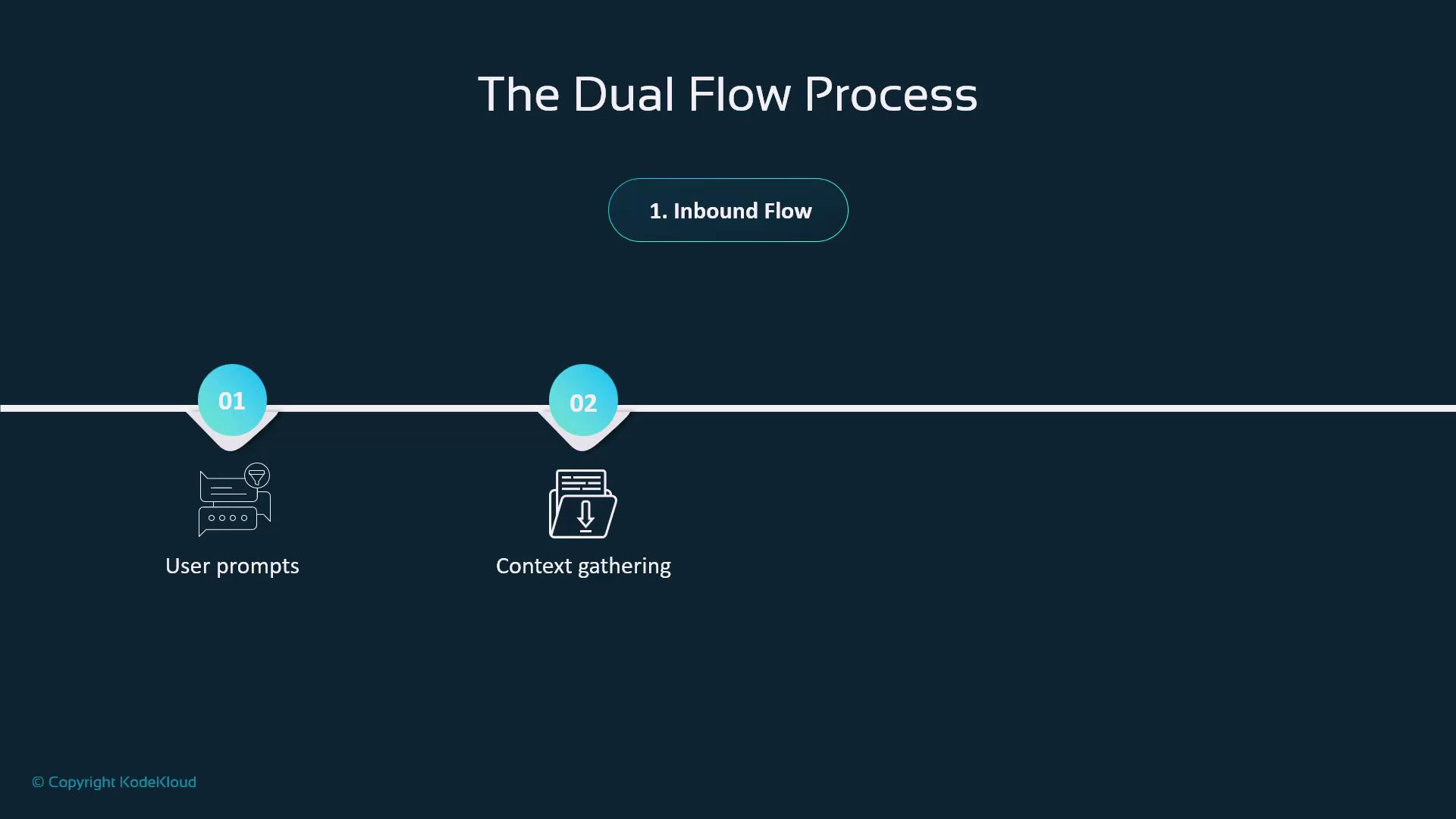
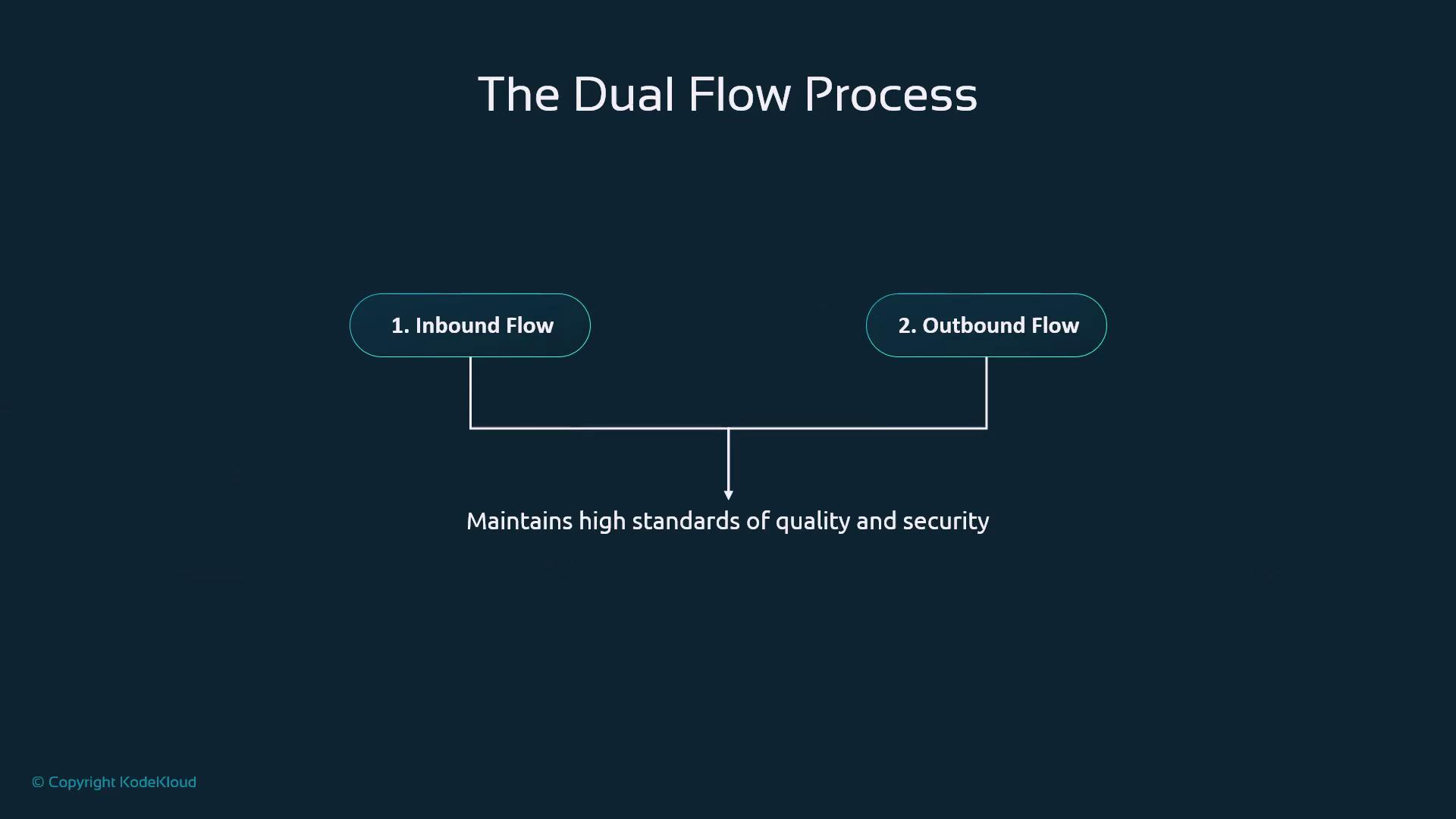
| Flow Type | Key Actions | Outcome |
|---|---|---|
| Inbound | Prompt ingestion, context gathering, toxicity checks | Secure, contextual input |
| Outbound | Post-processing, quality & security validation | High-quality code suggestions |
Why Data Flow Matters
- Better prompts lead to more accurate code.
- Security stages protect sensitive information.
- Aligned workflows boost development efficiency.
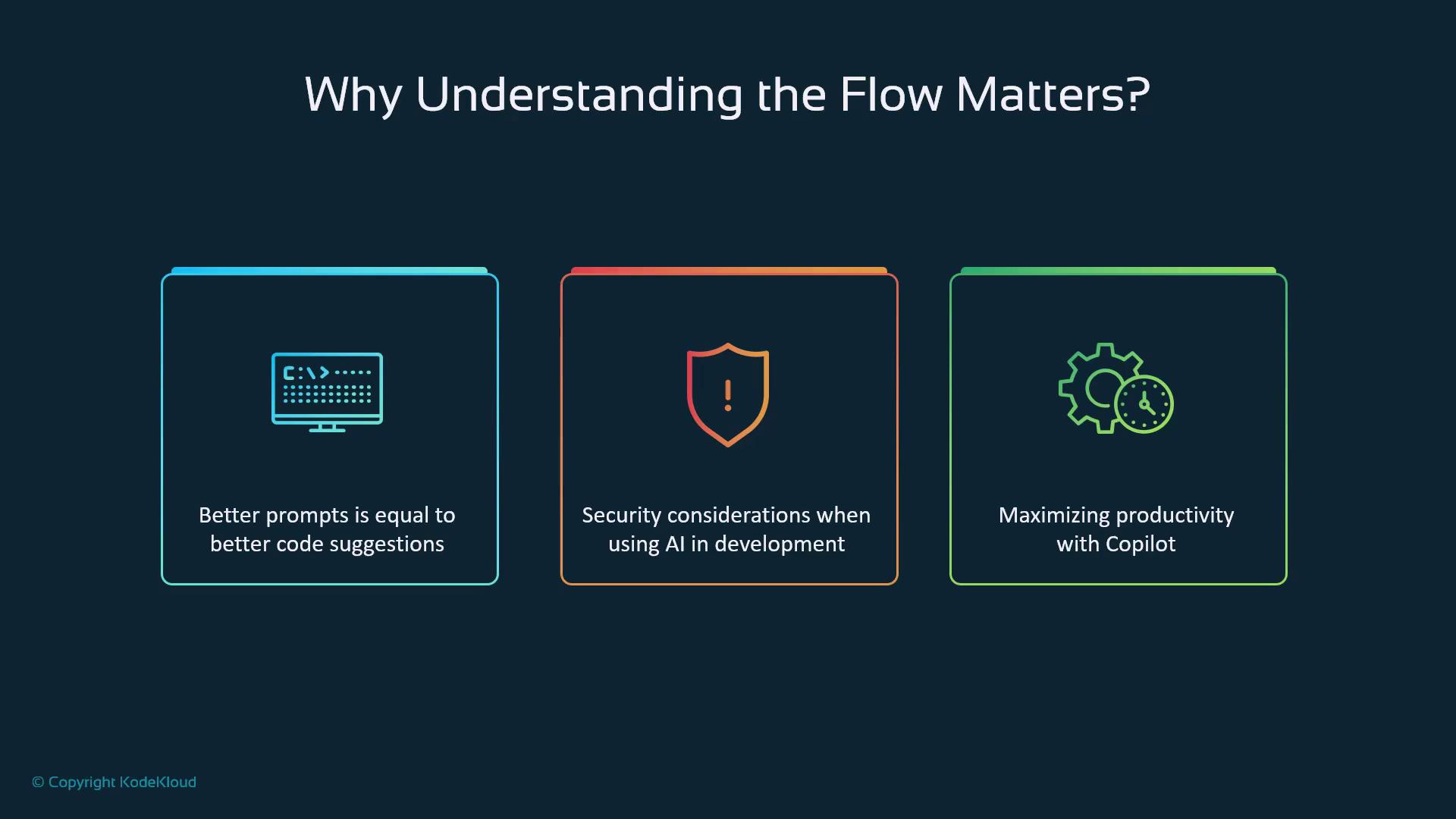
Step 1: Secure Prompt Transmission
All interactions between your editor and Copilot use HTTPS, ensuring end-to-end encryption. Copilot handles:
- Chat queries in the sidebar
- Natural-language comments directly in code
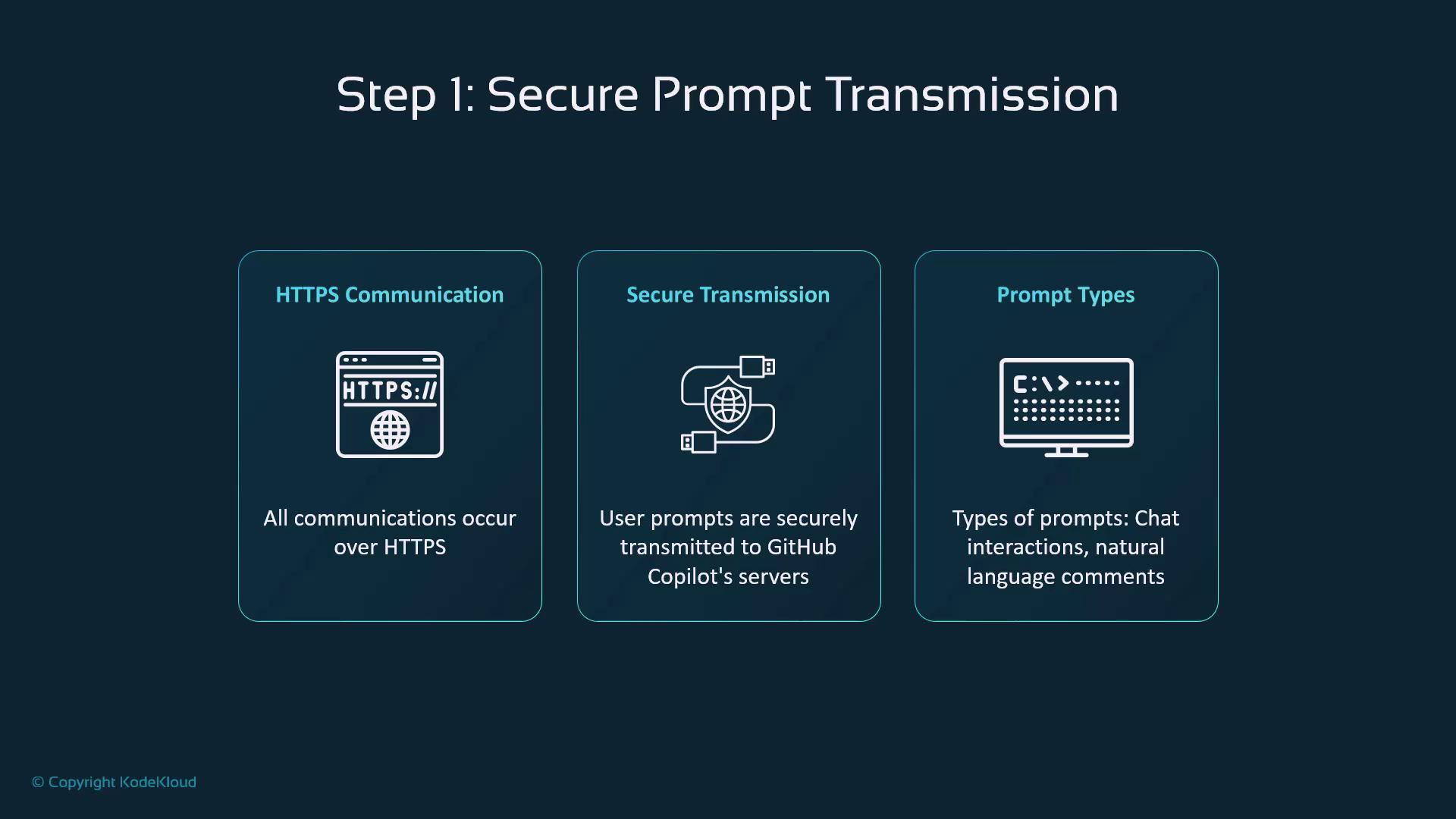
Note
HTTPS encryption safeguards your intellectual property and keeps credentials and proprietary code confidential.
Step 2: Context Gathering
Copilot enriches each prompt with:
- Code Context: Surrounding lines of code
- File Details: Name, type, and language
- Project Scope: Open files, folder structure
- Environment: Frameworks, dependencies, settings
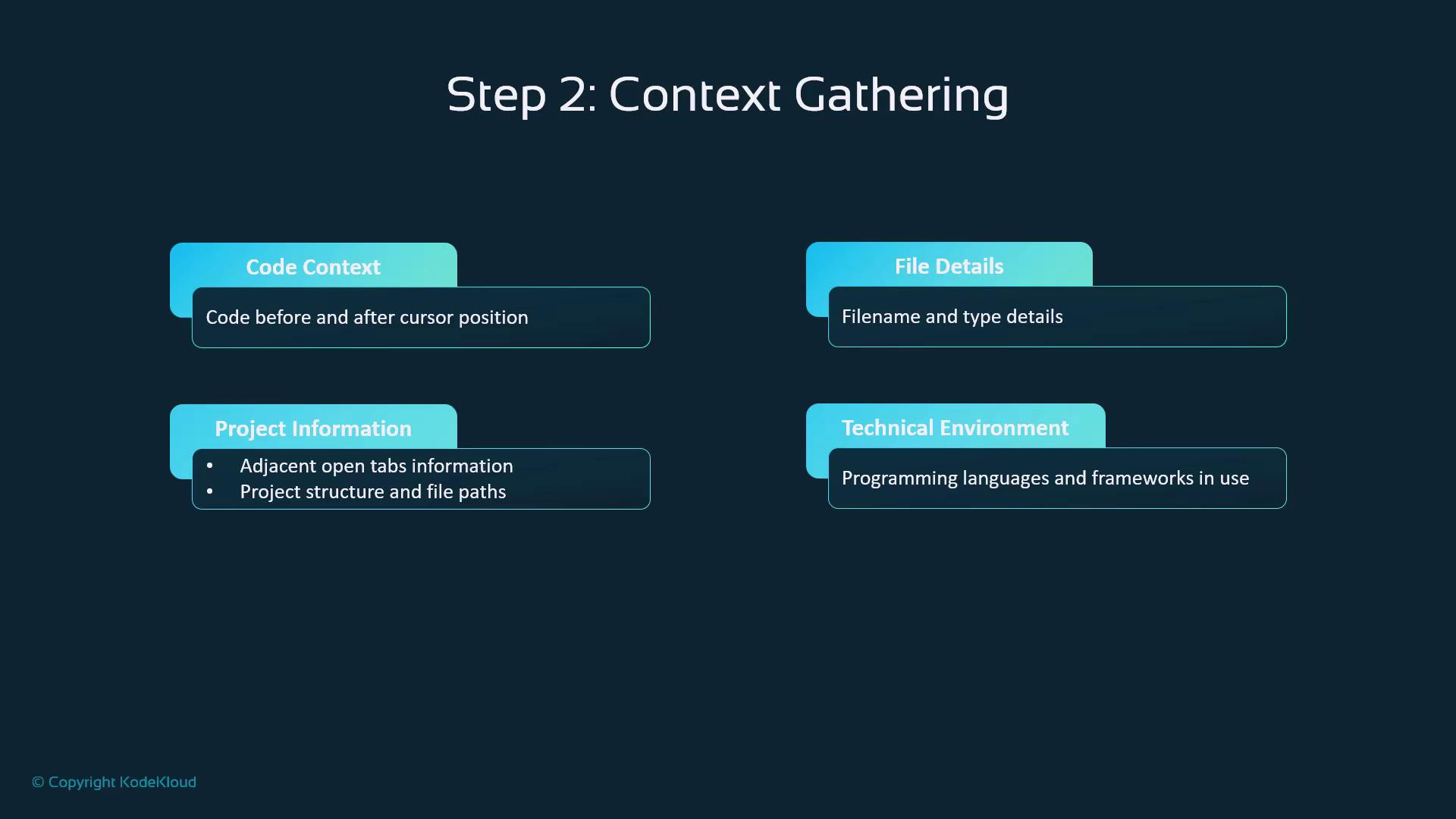
The “fill in the middle” (FIM) approach stitches suggestions seamlessly into your existing codebase.
Step 3: Proxy Filtering
Your request travels through a GitHub-owned proxy on Microsoft Azure that:
- Blocks malicious traffic
- Enforces integrity guardrails
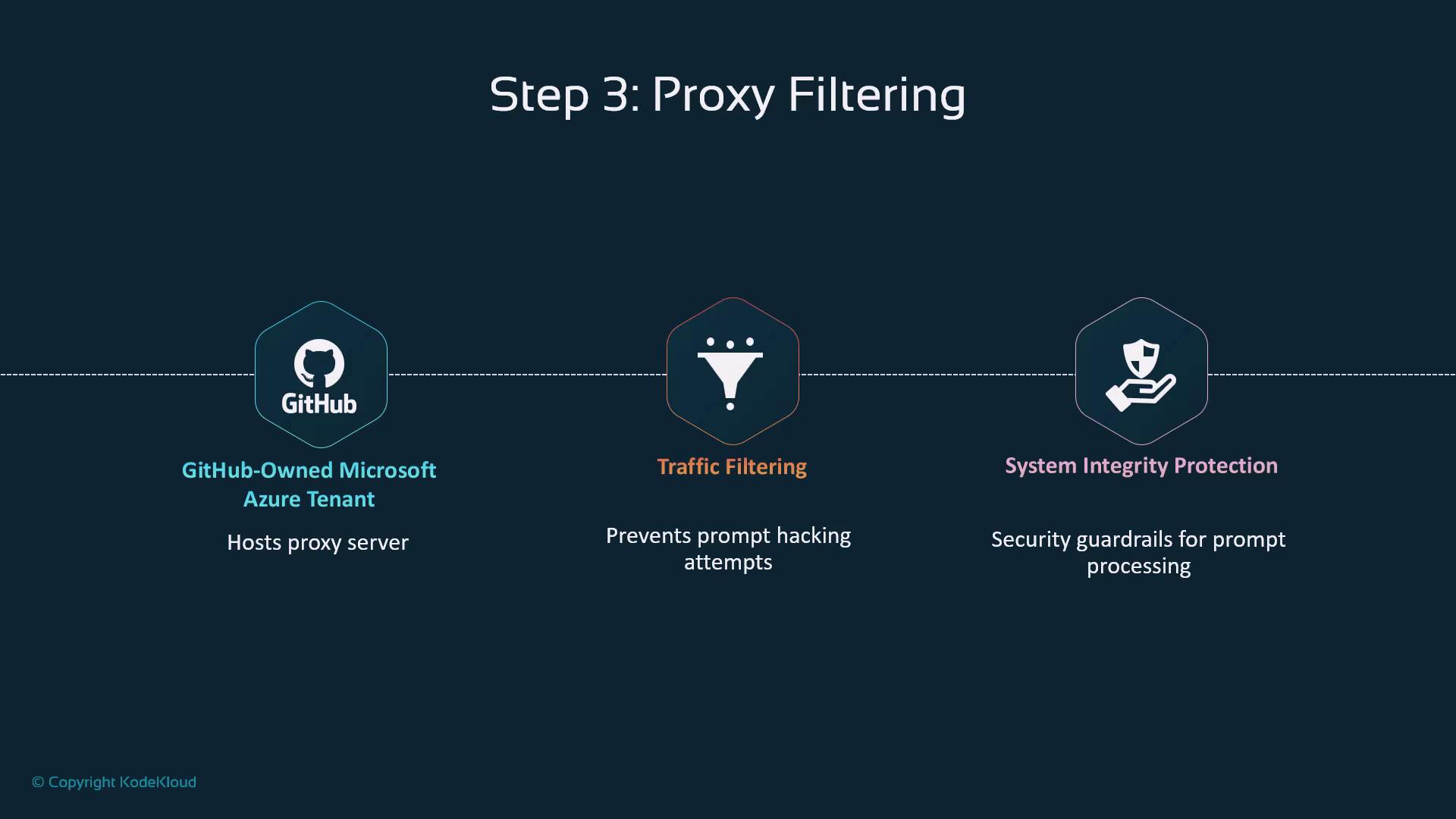
This transparent layer is essential for platform-wide security.
Step 4: Toxicity Filtering
Before the LLM sees the prompt, Copilot screens for:
- Hate speech or harassment
- Personal/sensitive data
- Ethical compliance
- Consistent policy enforcement
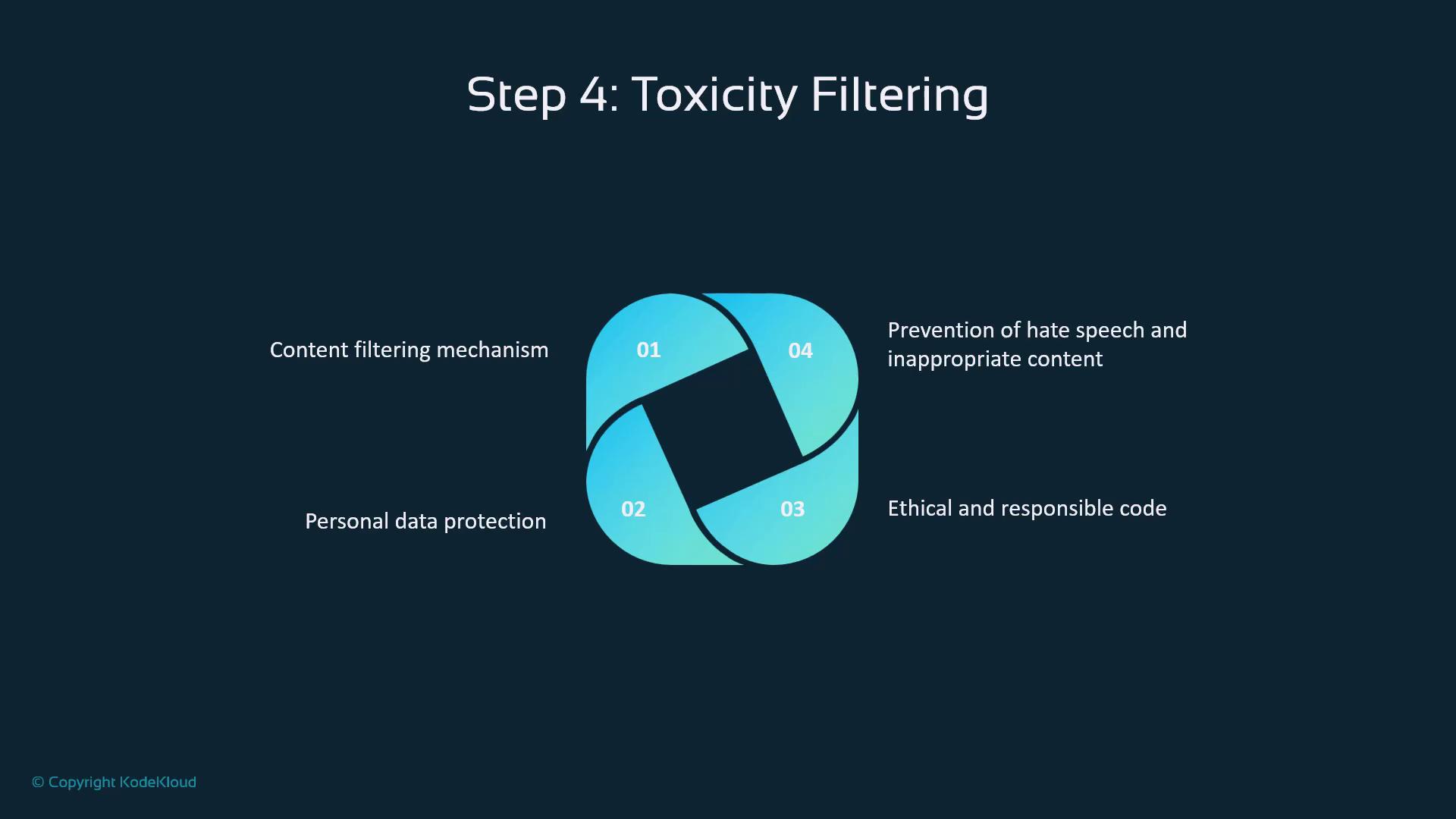
This ensures enterprise-grade compliance and a safe coding environment.
Step 5: Code Generation with LLM
At the heart of Copilot is a large language model that:
- Processes the filtered prompt
- Integrates project context
- Generates code snippets
- Aligns output to your coding style
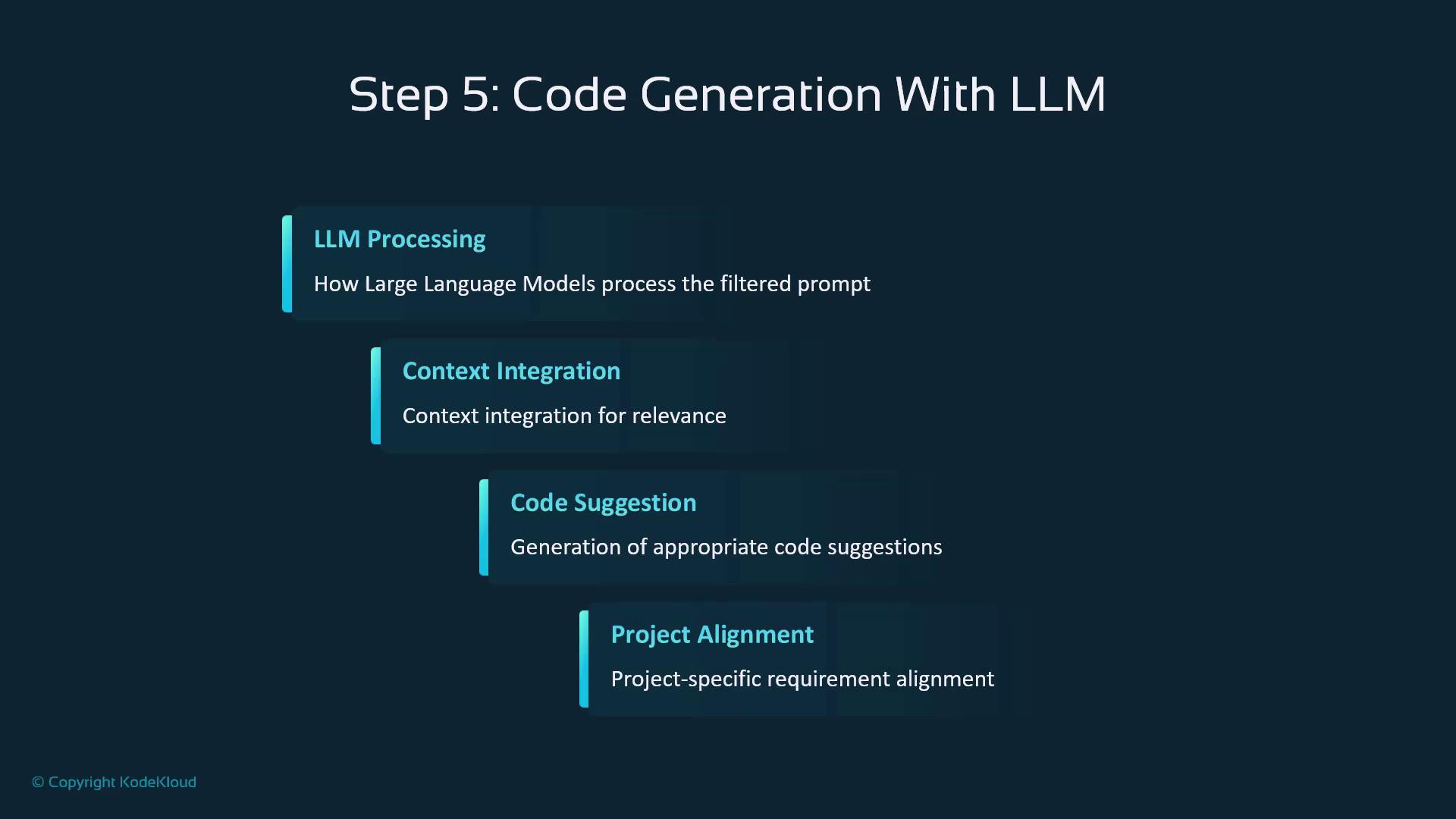
Your descriptions become actionable code suggestions in real time.
Post-Processing & Validation
Generated code then moves through these checkpoints:
| Validation Step | Purpose | Example Threat |
|---|---|---|
| Secondary Toxicity Filtering | Detect inappropriate outputs | Offensive content |
| Code Quality Checks | Identify bugs and vulnerabilities | Memory leaks, logic errors |
| Security Scans | Prevent XSS, SQL injection, etc. | Injection attacks |
| Enterprise Code Matching | Block reuse of proprietary snippets | License or IP violations |
| Truncation/Discard Policy | Remove low-quality or unsafe results | Poorly formed code |
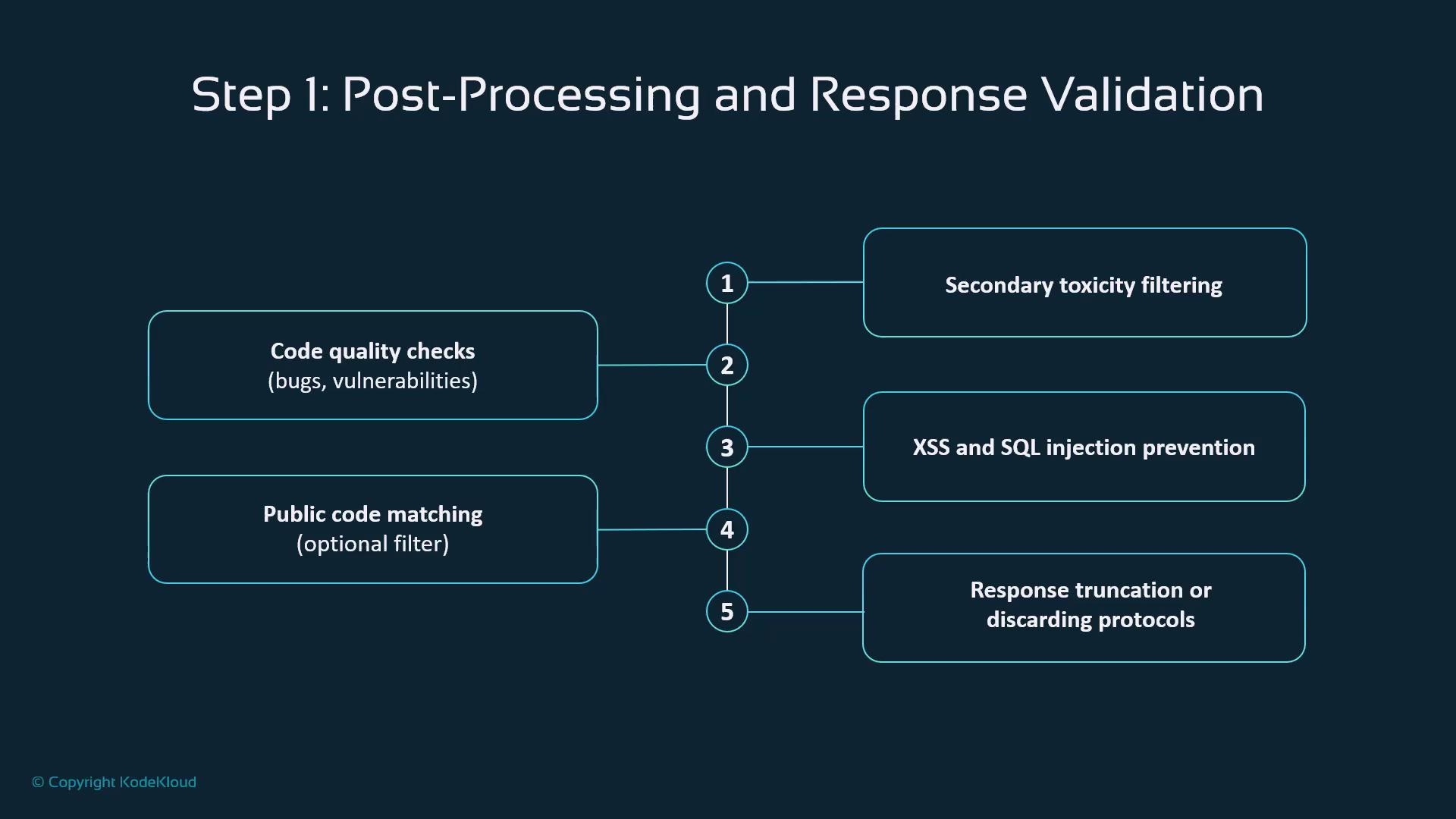
This pipeline guarantees that only vetted suggestions reach your editor.
Suggestion Delivery
Once approved, suggestions follow a three-step flow:
- Delivery: Transmit validated code
- UI Presentation: Show inline hints in your IDE
- User Interaction: Accept, modify, or reject via shortcuts
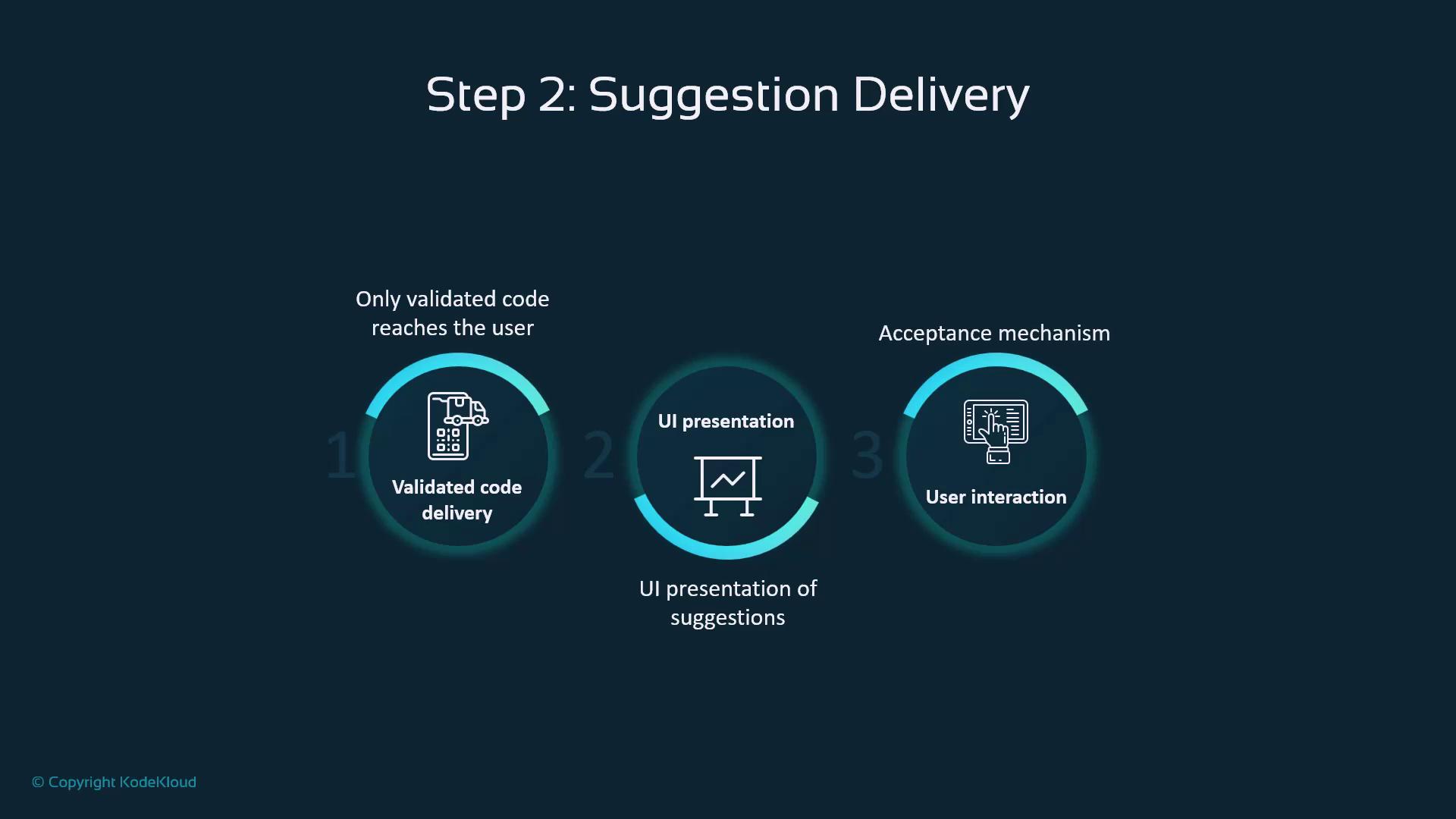
This non-intrusive design keeps development smooth and unobstructed.
Feedback Loop & Continuous Improvement
Every action—acceptance, edits, or rejections—feeds back into Copilot’s learning system:
- Knowledge Growth: Reinforces successful patterns
- Model Learning: Adapts to your coding preferences
- Continuous Refinement: Improves accuracy over time
- User Signals: Shape future suggestions
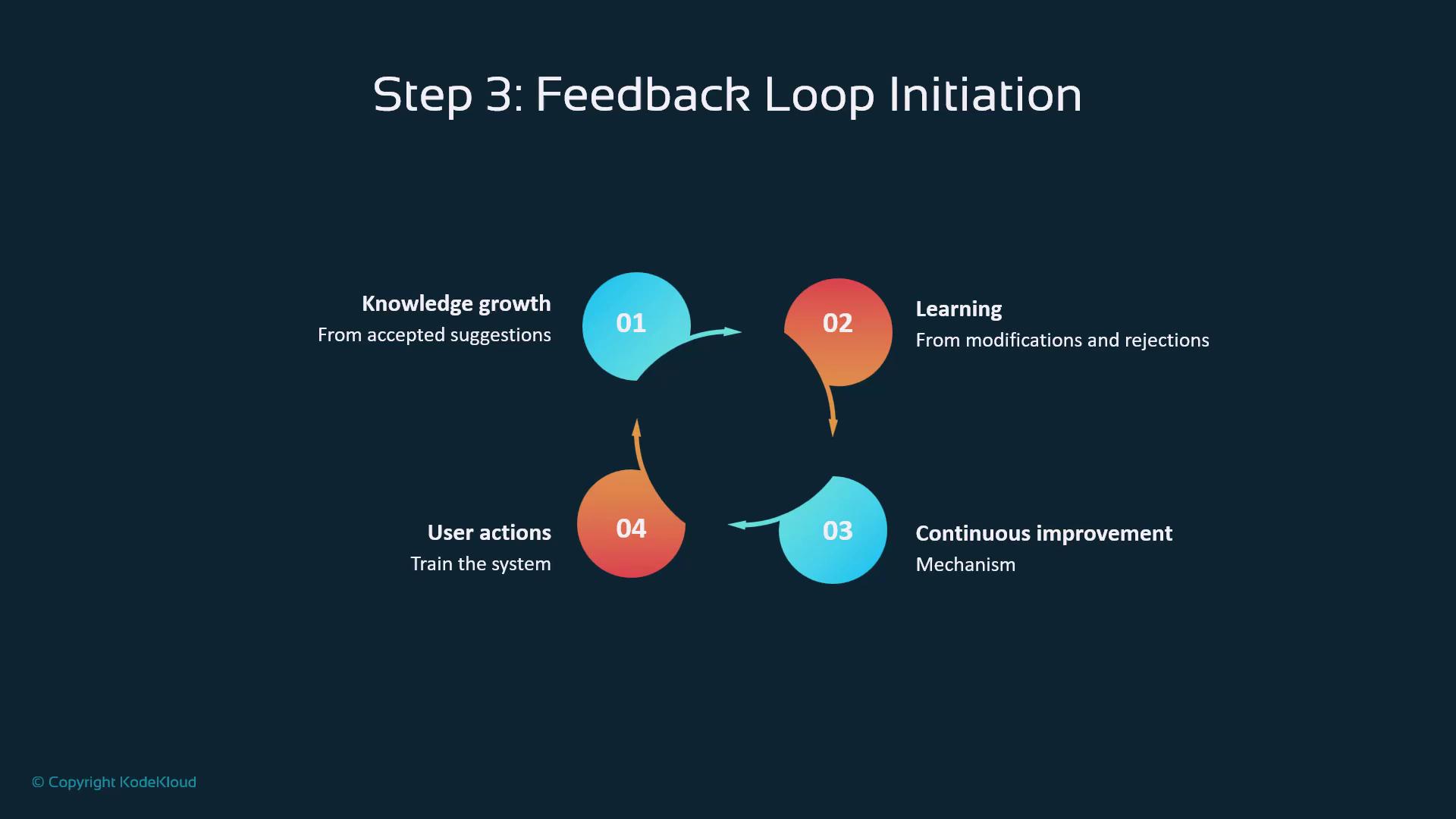
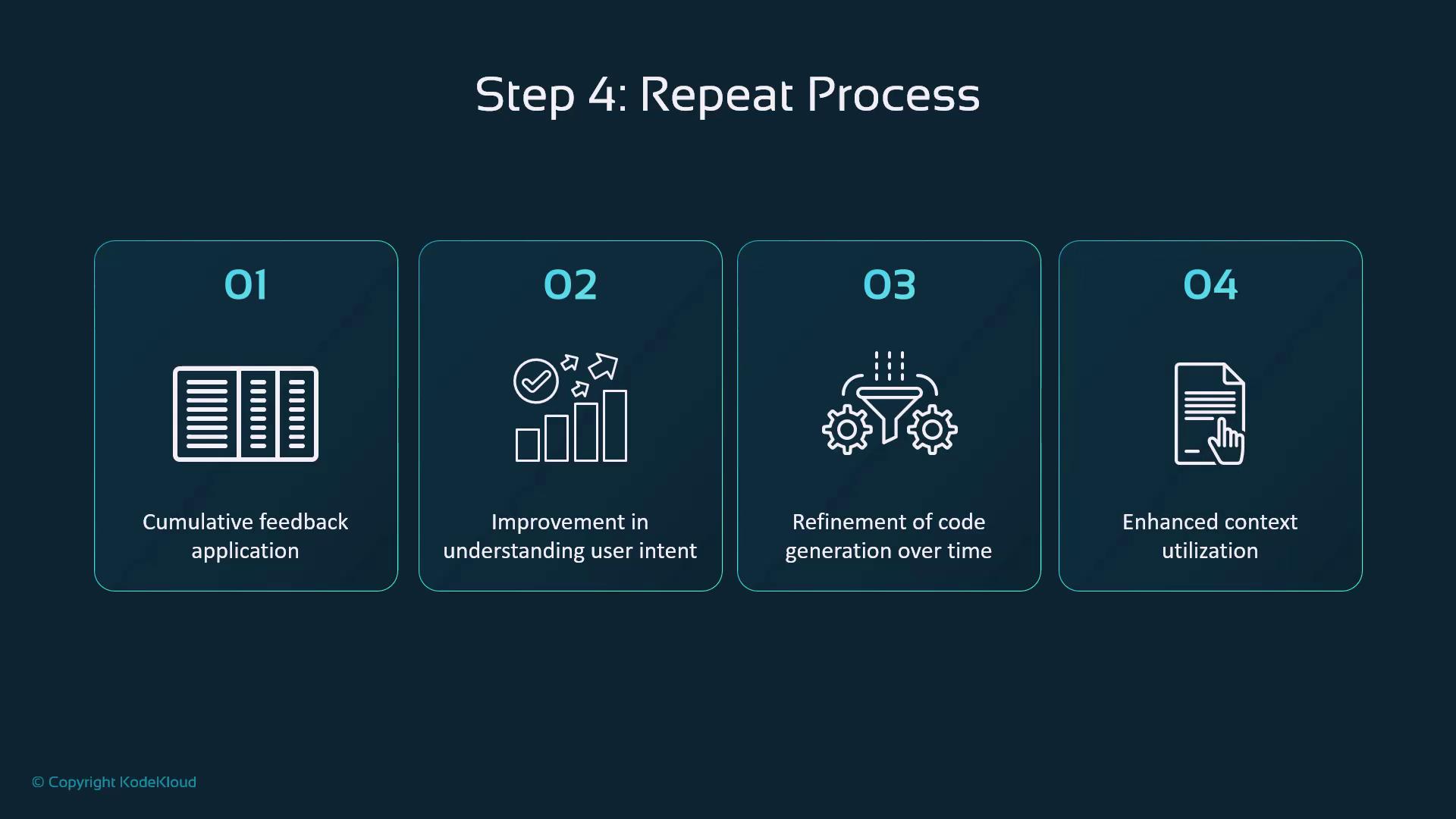
Writing Effective Prompts
To optimize suggestions:
- Be specific about functionality
- Add context via comments
- Include edge cases
- Specify file type and language
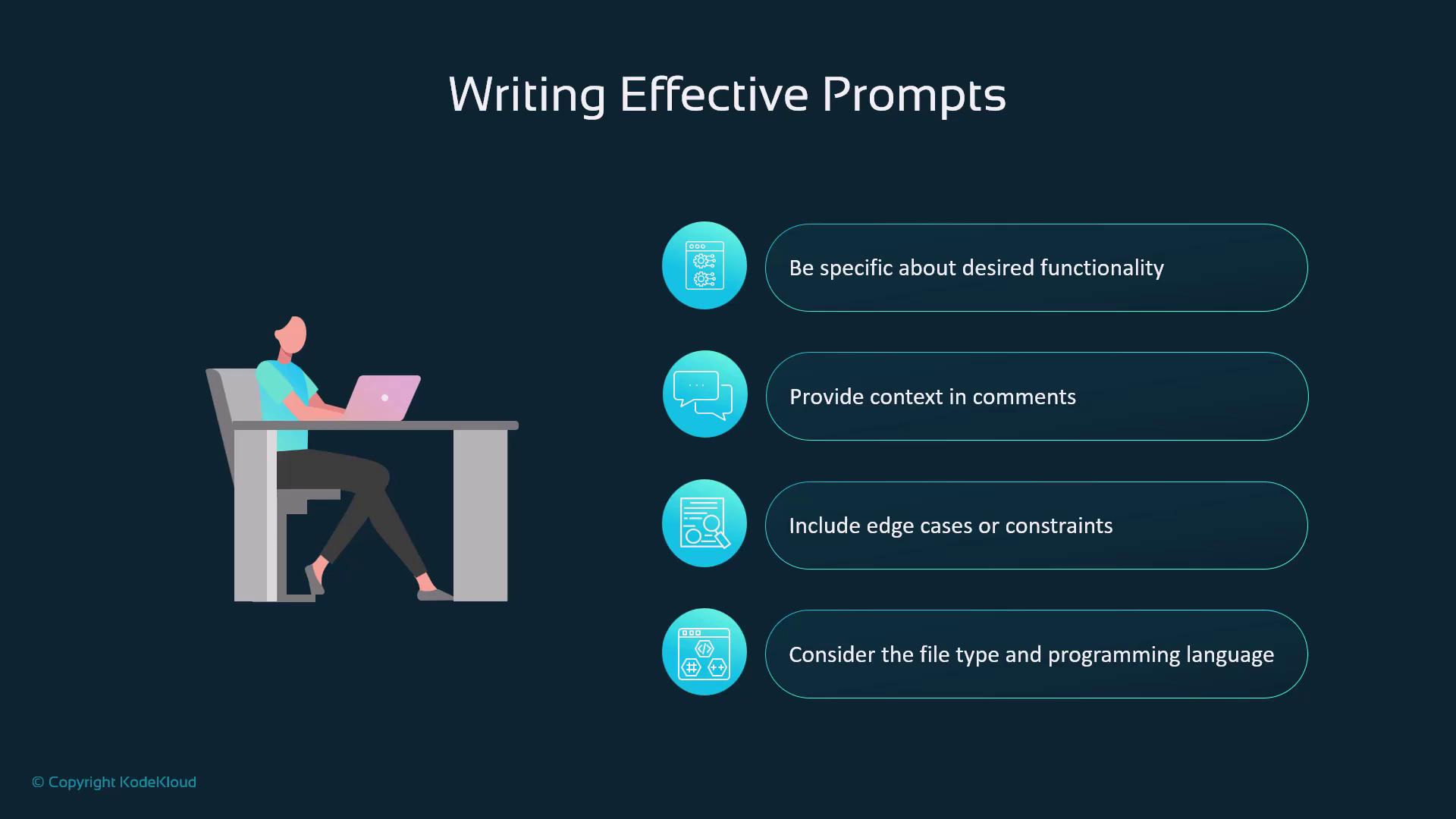
Note
Clear, detailed prompts help Copilot deliver precise code snippets. For more guidance, see GitHub Copilot documentation.
Common Prompt Patterns
- Function Descriptions: Define purpose and parameters
- Bug Fixes: Describe current vs. expected behavior
- Refactoring: Specify improvements and structure
- Test Generation: Outline features and frameworks
Prompt Security Best Practices
- Avoid embedding sensitive credentials or proprietary algorithms
- Handle any required sensitive data with care
- Adhere to corporate AI policies
- Uphold data privacy at all times

Warning
Never share API keys, secrets, or confidential data directly in your prompts.
Learning Mechanisms
Copilot refines its model through:
| Level | Scope |
|---|---|
| Global | Aggregated learnings from all users |
| Project-Specific | Patterns unique to your repository |
| Language & Stack | Framework and language fluency |
| Pattern Recognition | Reusable code structures and idioms |
This multi-layered approach balances personal relevance with broad improvements.
Administrator Controls
Enterprise settings include:
- Public Code Matching filters
- Policy Management for usage standards
- Security Configurations and role-based access
- Compliance Tools for regulatory adherence
![]()
These controls empower organizations to innovate securely.
Key Takeaways
- Copilot’s pipeline is a secure, multi-stage flow.
- Built-in safeguards maintain quality, security, and ethics.
- Your feedback drives continuous improvement.
- Understanding this flow helps you craft better prompts.
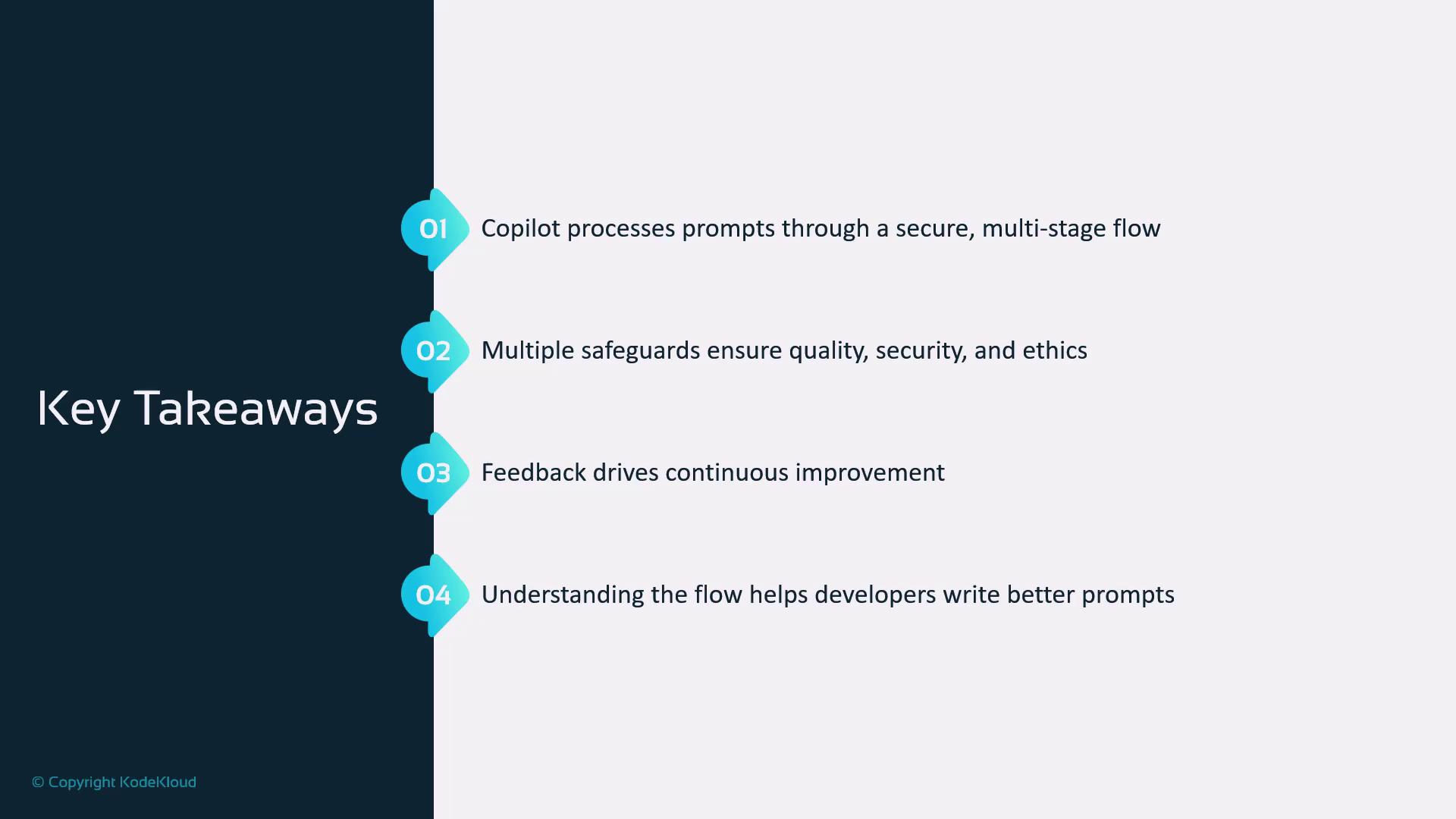
Leverage these insights to work more effectively and responsibly with GitHub Copilot.
Watch Video
Watch video content